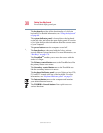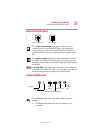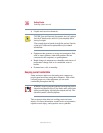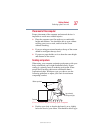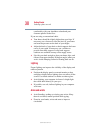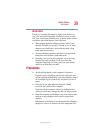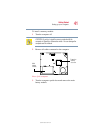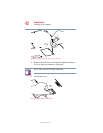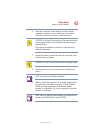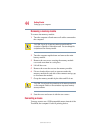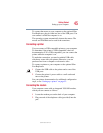
38
Getting Started
Selecting a place to work
5.375 x 8.375 ver 2.3.2
comfortably with your shoulders relaxed and your
forearms parallel to the floor.
If you are using a conventional chair:
❖ Your knees should be slightly higher than your hips. If
necessary, use a footrest to raise the level of your knees
and ease the pressure on the back of your thighs.
❖ Adjust the back of your chair so that it supports the lower
curve of your spine. If necessary, use a cushion to
provide extra back support. Lower-back-support
cushions are available at many office supply stores.
❖ Sit with your back straight so that your knees, hips, and
elbows form approximately 90-degree angles when you
work. Avoid slumping forward or leaning back too far.
Lighting
Proper lighting can improve the visibility of the display and
reduce eyestrain.
❖ Position the display panel or external monitor so that
sunlight or bright indoor lighting does not reflect off the
screen. Use tinted windows or shades to reduce glare.
❖ Avoid placing your computer in front of a bright light
that could shine directly in your eyes.
❖ If possible, use soft, indirect lighting in your computer
work area.
Arms and wrists
❖ Avoid bending, arching or twisting your wrists. Keep
them in a relaxed, neutral position while typing.
❖ Exercise your hands, wrists and arms to improve
circulation.



